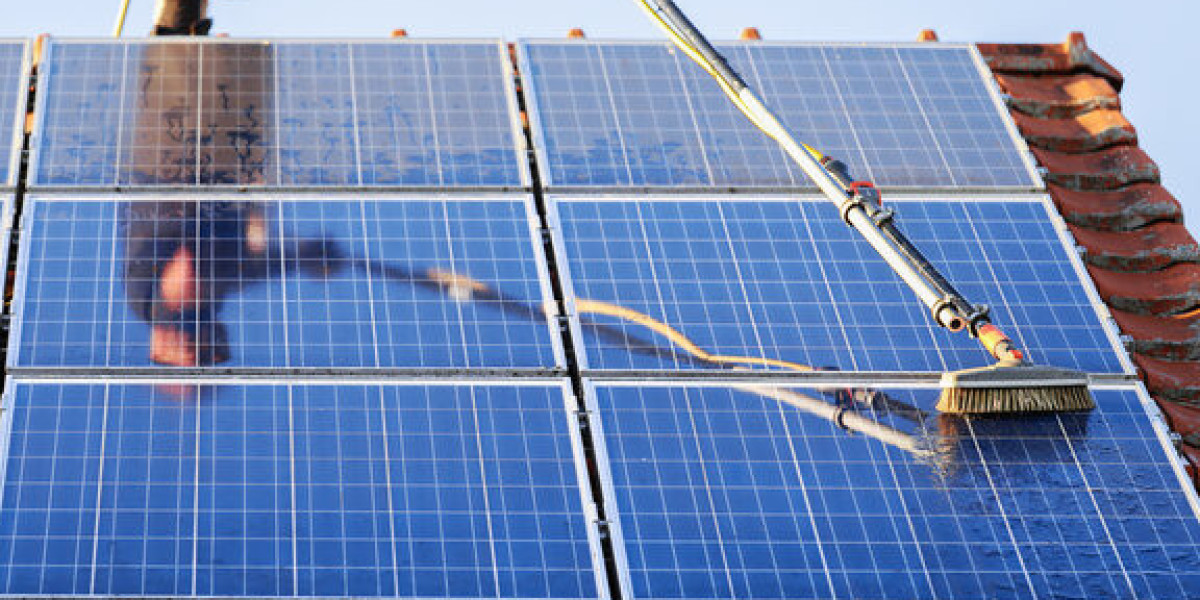Solar panels are a fantastic investment for both homeowners and businesses, offering clean energy and significant savings on electricity bills. However, to ensure they operate at peak efficiency, regular maintenance is crucial—especially solar panel cleaning. Dust, dirt, bird droppings, and pollen can drastically reduce their performance.
Similarly, if your solar panels are installed on a rooftop with glass surfaces, roof glass cleaning is equally important to maintain aesthetics and functionality. In this comprehensive guide, we’ll explore everything you need to know about solar panel cleaning, including tools, techniques, and safety measures.
Why Is Solar Panel Cleaning Essential?
1. Maximizing Energy Output
Dirty solar panels can lose up to 25% of their efficiency. A layer of dust or grime blocks sunlight, reducing the system’s ability to generate power. Regular solar panel cleaning ensures optimal performance and higher energy savings.
2. Preventing Long-Term Damage
Debris like bird droppings or tree sap can corrode the panel surface over time. Combining roof glass cleaning with solar panel cleaning helps prevent permanent damage and extends the lifespan of your system.
3. Maintaining Warranty Compliance
Some manufacturers require regular maintenance, including solar panel cleaning, to keep warranties valid. Neglecting this could void your coverage.
How Often Should You Clean Solar Panels?
The frequency of solar panel cleaning depends on several factors:
Location: Dusty areas or places with heavy bird activity need more frequent cleaning.
Season: Pollen in spring and fallen leaves in autumn may require additional cleaning.
Roof Glass Cleaning Needs: If your rooftop has glass elements, scheduling roof glass cleaning alongside solar panel cleaning ensures a uniform appearance and better light penetration.
As a general rule, inspect and clean your panels at least twice a year, with additional touch-ups as needed.
Best Tools & Equipment for Solar Panel Cleaning
1. Soft Brushes & Squeegees
Avoid abrasive materials that can scratch the panels. Use a soft brush or a squeegee with a long handle for safe solar panel cleaning.
2. Deionized or Distilled Water
Hard water leaves mineral deposits. For streak-free results, use deionized water—especially important for roof glass cleaning to maintain clarity.
3. Mild Soap or Solar Panel Cleaning Solution
Harsh chemicals can damage the anti-reflective coating. Stick to gentle, biodegradable cleaners.
4. Hose with a Adjustable Nozzle
A garden hose with a gentle spray setting helps rinse off loose dirt before scrubbing.
5. Safety Gear
If your panels are on a high roof, use a harness and non-slip shoes. For roof glass cleaning, ensure proper footing to avoid accidents.
Step-by-Step Solar Panel Cleaning Process
Step 1: Turn Off the System
Safety first! Switch off your solar panels to avoid electrical hazards.
Step 2: Remove Loose Debris
Use a leaf blower or soft brush to clear leaves and dust before washing.
Step 3: Apply Cleaning Solution
Mix mild soap with water and gently scrub the panels. For roof glass cleaning, use the same solution to maintain uniformity.
Step 4: Rinse Thoroughly
Use a hose to rinse off soap residue. Avoid high-pressure washers, which can damage the panels.
Step 5: Dry with a Microfiber Cloth (Optional)
For a spotless finish, wipe the panels with a microfiber cloth. This step is especially useful for roof glass cleaning to prevent water spots.
Common Mistakes to Avoid in Solar Panel Cleaning
1. Using Hard Water or Tap Water
Mineral buildup reduces efficiency. Always use purified or deionized water.
2. Cleaning During Peak Sunlight
Hot panels + cold water = cracks. Clean early in the morning or late afternoon.
3. Ignoring Roof Glass Cleaning
If your setup includes glass roofing, skipping roof glass cleaning can lead to uneven shading and reduced solar efficiency.
4. Using Abrasive Materials
Steel wool or rough sponges scratch the surface, permanently damaging panels.
Professional vs. DIY Solar Panel Cleaning
When to Hire a Professional
If your roof is steep or high.
If you’re uncomfortable with heights.
For large-scale commercial systems.
When DIY Works
Ground-mounted or easily accessible panels.
Small residential setups.
If you combine solar panel cleaning with routine roof glass cleaning for consistency.
Automated Cleaning Systems: Are They Worth It?
For those who prefer a hands-off approach, automated cleaning systems are available:
Self-Cleaning Coatings: Reduce the need for frequent solar panel cleaning.
Robotic Cleaners: Ideal for large installations.
Sprinkler Systems: Useful in dusty regions but may require additional roof glass cleaning to prevent water stains.
While convenient, these systems may not replace manual cleaning entirely.
Final Tips for Maintaining Peak Solar Efficiency
Monitor Performance: Check your solar output regularly—a sudden drop may indicate the need for solar panel cleaning.
Trim Nearby Trees: Prevents excessive debris buildup.
Schedule Seasonal Cleaning: Align roof glass cleaning with solar panel cleaning for a comprehensive maintenance routine.
Inspect for Damage: Look for cracks or discoloration during cleaning.
Conclusion
Proper solar panel cleaning is non-negotiable for maximizing energy production and protecting your investment. Whether you tackle it yourself or hire professionals, consistency is key. And don’t forget—roof glass cleaning plays a supporting role in maintaining overall efficiency.
By following this guide, you’ll ensure your solar panels operate at peak performance for years to come. Ready to boost your solar efficiency? Start cleaning today!








